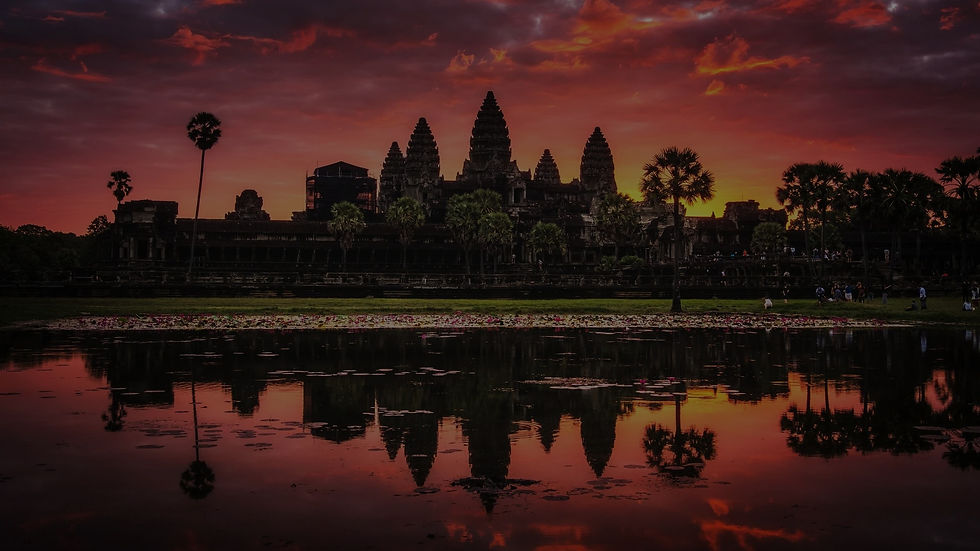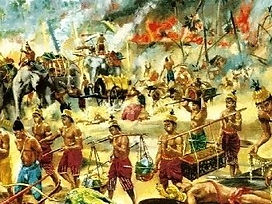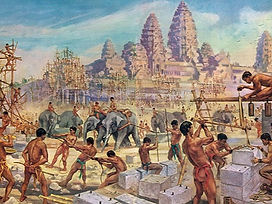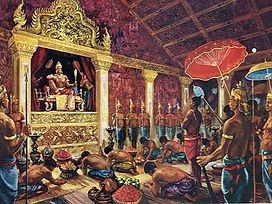

Welcome to Wats Up at Angkor: Exploring History & Ritual
ANGKOR WAT



Focus 1
History of Angkor



Focus 2
Architecture of Angkor



Focus 3
Religion of Angkor

History
Built in the early 12th century, Angkor Wat was constructed by King Suryavarman II. Originally, the temple was founded as a Hindu site dedicated to the Hindu deity, Vishnu. However, towards the end of the 12th century, the shifting power dynamics within the Khmer Empire saw a religious transition of Angkor Wat into a Buddhist site. This “Age of Angkor,” throughout the 12th and 13th centuries, represents the peak of Cambodia’s influence and power throughout Southeast Asia. Despite intermittent periods of neglect, Angkor Wat remains an enduring symbol of Cambodia’s cultural and religious heritage, as it is now a UNESCO World Heritage Site and draws in millions of visitors annually. Our history page will focus on the temple’s origins, the development of power and culture within the Khmer Empire, and the alteration of the temple’s usage over time.
Architecture
Angkor stands as a pinnacle piece of Khmer architecture, embodying an extraordinary approach of creativity and engineering without the aid of modern machinery. This architectural masterpiece was built with the labor of thousands of indigenous Khmer people, using over six hundred and fifty elephants to transport massive sandstone blocks from a quarry over twenty-five miles away. Moreover, the distinctive west-facing orientation of Angkor Wat, a direction associated with death in Hinduism, defies typical temple construction, hinting at its dual purpose as both a temple mausoleum for King Suryavarman II. The construction of Angkor Wat, along with its deliberate architectural orientation, not only showcases the architectural prowess of the Khmer Empire but also reflects its deep integration with religious beliefs and history, deepening the brilliance of the Khmer people.


Religion
The religious history of Angkor Wat is unlike any other. In the twelfth century, the Khmer Empire’s religious identity experienced a significant transformation from Hinduism to a seamless adoption of Mahayana Buddhism. Throughout history, there has existed both religious division -- marked by the separation of distinct practices -- and religious syncretism -- characterized by the blending of ritual spaces -- within the temple. Angkor Wat showcases the blending of Hindu and Buddhist elements through its artwork, including sculptures, bas-reliefs, and murals. Notably, the temple's central tower symbolizes Mount Meru, a mountain considered sacred in both Hinduism and Buddhism. Our in-depth section on religion will focus primarily on the temple’s religious transformation while also showcasing the fusion of Hindu and Buddhist ritual symbols-- such as the "Churning of the Ocean of Milk" -- which exist throughout the temple.
Conclusion (The Bigger Picture)
To fully appreciate Angkor Wat through our website, it's crucial to engage equally with the religion, architecture, and history subpages, as they are deeply interlinked. For example, the religious transition from Hinduism to Buddhism is not only significant in a religious context but also marks a pivotal historical moment, corresponding with the empire's peak in power. This religious transition was also reflected architecturally in the integration of Buddhist statues and elements alongside traditional Hindu bas-reliefs whose influence remains visible to this day. Understanding these interconnected aspects will offer you a comprehensive view of Angkor Wat's unique cultural and historical significance, and provide a level of immersion that can only be achieved by visiting and exploring each subpage.
Works Cited
Opening Image: Viator
Three Focus Images: Devata
Opening History Image: AI Generation (Prompting: History, Temple)
Opening Architecture Image: AI Generation (Prompting: Construction, Elephant Transport, Sandstone)
Opening Religion Image: AI Generation (Prompting: Religious Syncretism, Hinduism, Buddhism, Temple)